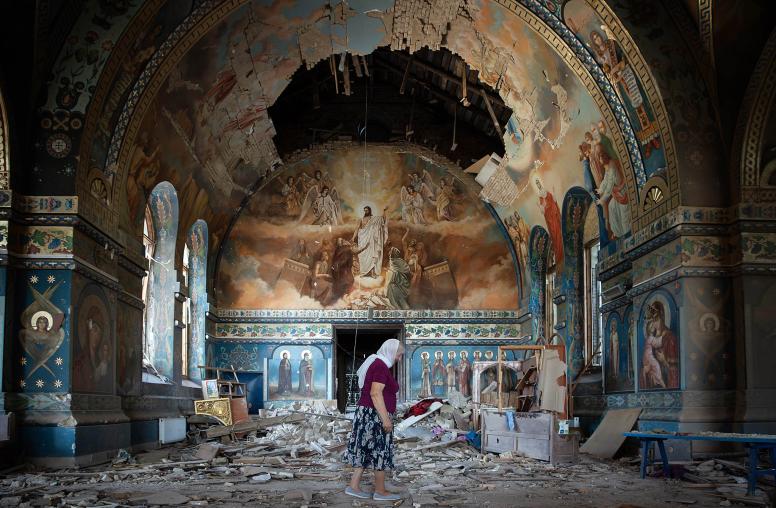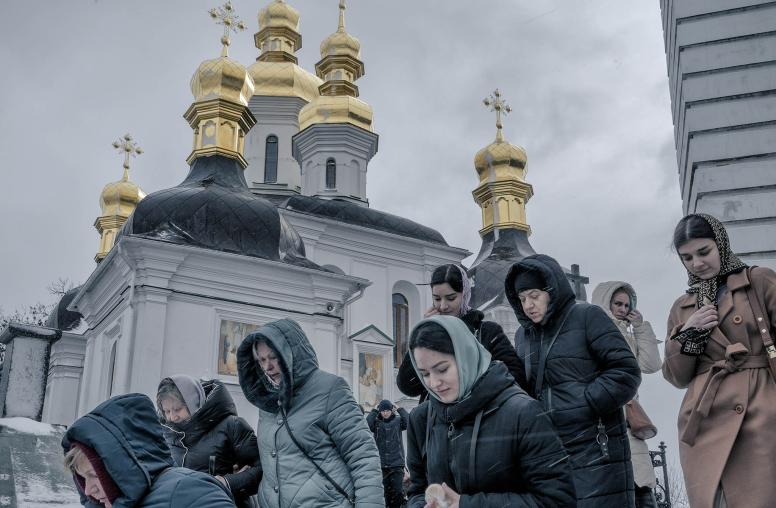Exploring the Nexus of Religion and Gender and Sexual Minorities
Knowledge of unique gender and sexual identities in religious contexts is crucial for local peacebuilding.
Peacebuilders and practitioners have long recognized that knowledge of local contexts leads to more practical and effective programming. However, knowledge of unique gender and sexual identities, as well as cultural practices, has been mostly absent from the long list of cultural dynamics that are assessed when looking at local peacebuilding contexts — despite often holding deeply important symbolic, religious and political meanings.

In particular, gender and sexual minorities (GSM) in heavily religious contexts are often assumed to be marginal when compared to issues such as politics, violence and peace. Yet in recent years, we’ve seen peace processes elevate gender and sexual minorities to both positive and negative ends: in Colombia, the peace process included an LGBT+ representative, while several other peace processes have adopted provisions harmful to GSM populations. GSM are part of key issues and processes central to peace deals and politics.
GSM often manifest in religious contexts in ways that peacebuilders and practitioners might not expect. Kuwait recently overturned a law that made “imitation of the opposite sex” illegal after the law was used to target transgender people. This February, a transgender woman in Pakistan made headlines by becoming the country’s first practicing openly transgender doctor.
These examples show that gender and sexual minorities don’t exist on the periphery simply because religion is a powerful force in a particular society. Rather, they are often cultural touchstones in regions that some might view as not facing gender and sexual diversity issues at all.
It’s vital, then, that peacebuilders and practitioners more robustly engage with gender and sexual minorities. By exploring the nexus between GSM and religious and faith communities, we can better understand local societies and ensure that peace processes don’t leave crucial populations on the sidelines.
Why Has the Nexus Between GSM and Religion Been Overlooked?
As momentum gathers to examine the relationship between GSM and religion, it’s noteworthy to consider why this intersection has been underexplored and often misunderstood in the first place.
For starters, until now, there has been little drive to explore GSM and religion and faith in the peacebuilding field. One reason is the assumption that gender and sexual minorities are secular — and that religious communities are generally hostile to GSM. While some studies suggest this applies in certain contexts, the situation is far more complex than what we might think.
Additionally, there’s a prevailing concern that working with GSM and religion can be seen as too controversial or the risks too great. While such anxieties may have some merit, there are many religious and faith communities for whom GSM and unique gender and sexuality identities are a part of daily life and history.
GSM in Communities of Faith
GSM may take on a variety of roles in faith communities. In some instances, elements of GSM and religion may be intertwined with one another as part of an individual or group’s identity.
In India, for example, a GSM group called the Hjira consists of ascetics who inhabit a liminal space between men and women, monk and local healer. Their gender representation is that of a woman, though they are assigned male at birth. This community is not necessarily transgender — they are closer to celibate Christian priests than American trans women regarding their social roles and responsibilities, as many are often celibate. They are a gender and sexual minority whose role, sexual practices and identity is established by religious belief.
While some, like the Hijra, may have an identity that is both religious and GSM that confers authority, others might be religious people who happen to be gender and sexual minorities — in this case, their identity as a GSM can lead to violence and ostracism from their religious and cultural communities.
GSM are drawn together to seek the common resources they require, including shelter, safety, medical care, legal support and community. Across the world, shelters, homes and community organizations tailored to GSM people protect them from violence and bring together people from across ethnic and religious divides, whose identity may cut across the usually rigid boundaries of religion, ethnicity, caste and class.
One USIP partner in Pakistan, the Forum for Dignity Initiative, is an example of this phenomenon. FDI brings together trans and cis women of many ethnicities and religions, including Baloch, Afghan, Pakistani, Hazara and Sunni Muslims, to workshop ways to advance their rights and interests. In the same way that women's groups may transcend boundaries to pursue common goals, this pattern is reproduced for GSM people. In divided societies, informal GSM networks could be utilized for programs such as interfaith dialogue or to provide insight into the conditions on the ground in hard-to-access areas.
Though many may view transgender people as marginal to peace and conflict, in the Pakistan case, we see a situation where the religious minority group, the Hazara women, gain from partnering with a group that includes transgender women. Working on behalf of Hazaras in Pakistan, in this case, meant working with transgender people. This work on religious freedom and freedom from persecution based on faith is a clear example of how GSM inclusion can slot into the peacebuilding agenda and why it belongs in our peacebuilding lexicon.
The Importance of Cultural and Religious Literacy
This kind of cultural and religious literacy, while innovative and ground-breaking, must also be considered essential for peacebuilding practitioners — not just for the advantages it provides, but for the harm it prevents. Without carefully considering how and why we work on GSM issues; we could cause more harm than good to GSM people.
A recent report by Outright International offers an example of the issues that arise from not developing cultural or religious literacy. While LGBT is inclusive, it does not necessarily represent all gender and sexual minority people in a country like Afghanistan, where many people's sexual and gender practices are do not fit neatly into any one category. This linguistic and cultural misunderstanding of the diversity of GSM in Afghanistan is telling, as it foreshadows the much larger error in terms of recommendations.
The recommendations section of this report writes that the Taliban leadership must "publicly direct all Taliban members to cease discrimination and violence against LGBT people." This policy prescription has no chance of being followed through. Encouraging NGO’s, groups and governments to pursue unrealistic goals is strategically bad for GSM people. The reason is that if this policy prescription was acted upon, it may cause blowback as it would bring attention to GSM people and symbolically tie them to a foreign power. In contexts where religious and nationalist sentiment are intertwined, this sort of recommendation may stand to alienate GSM people more deeply from their society, marking them as targets. Resistance to GSM can then be cast as patriotic and nationalist. Avoiding this is essential to making real progress for GSM people. Broad prescriptions such as this may fit for a country like Thailand, where transgender people have some social acceptance but lack legal recognition.
Fortunately, there are many strategically feasible options for countries where broad prescriptions aren’t a good fit. There are gay, lesbian, bi and transgender Afghans who are struggling to find their new lives abroad. These GSM Afghans, as well as GSM refugees from across the world, are a community that requires exceptional support from the international community and their new home governments, as they often have specific social, legal and sometimes medical needs.
Without cultural and religious context, our policy prescriptions which seek to mitigate conflict may be irrelevant and unactionable. Cultural and religious literacy allows us to focus on the needs of the communities we seek to serve, and in doing so, shape our approaches to peacebuilding more accurately.
Recommendations for Peacebuilders
In all religions, some people identify as gender and sexual minorities; their inclusion animates debates that can escalate to schisms. In other contexts, GSM is seen as symbolic of world-historical trends (liberalism, globalizations) and are therefore targeted for violence as a symbolic act of violence against the larger global order.
For those involved in peacebuilding and who already work with religious and faith communities, the vital next step is to move beyond what we might term the "agree to disagree" approach to gender and sexual minorities. This approach assumes that religious groups are hostile to GSM and that GSM is inherently secular. What will be more productive is to look at where we are working and try to identify in our local contexts the varied, rich and often religious aspects of sexual and gender practices that defy our expectations and assumptions. In doing so, we can set an outsized example for those interested in GSM inclusion across the fields of development, peacebuilding and international relations by prioritizing the needs and identities of those we seek to serve.



